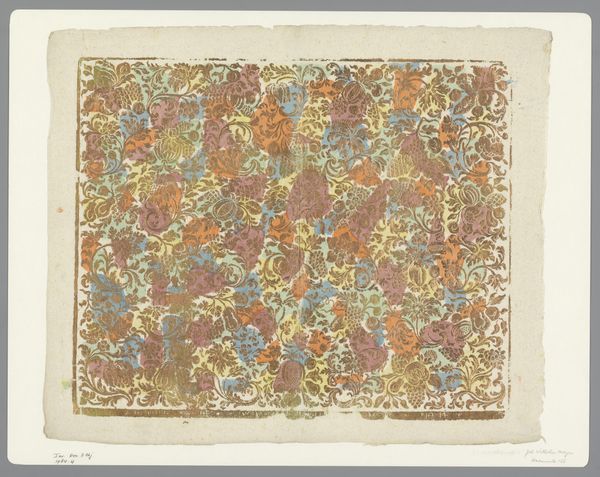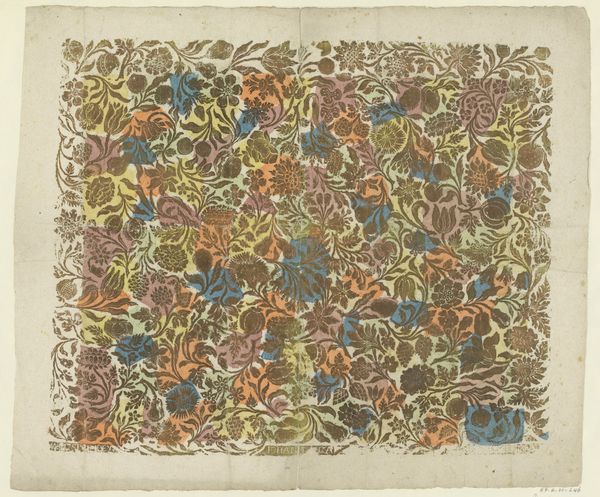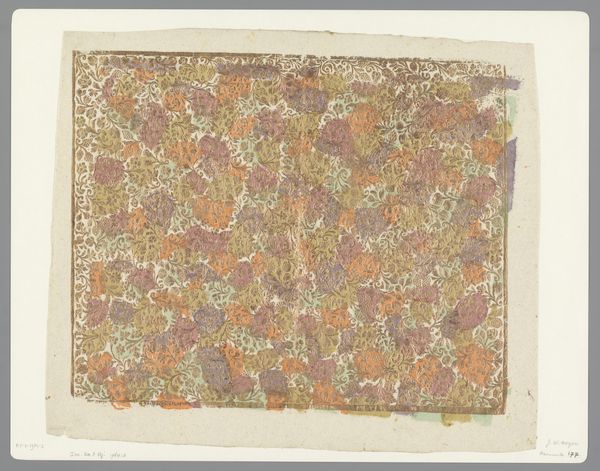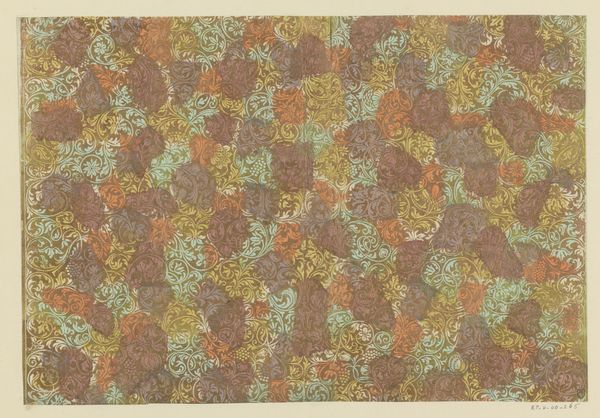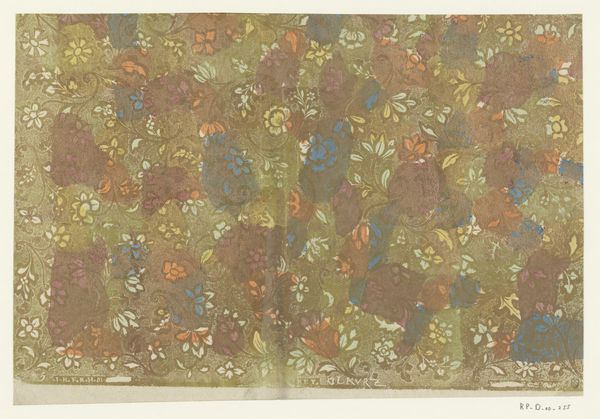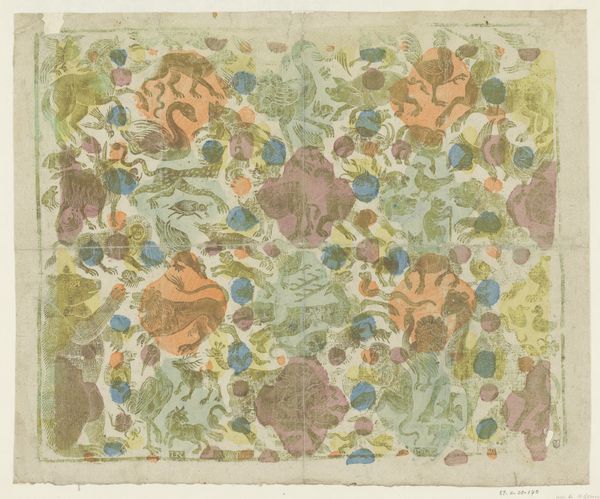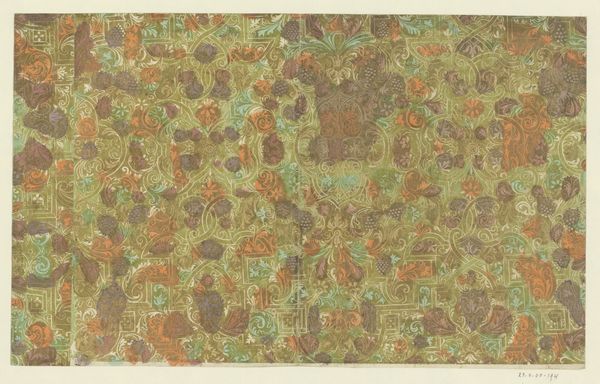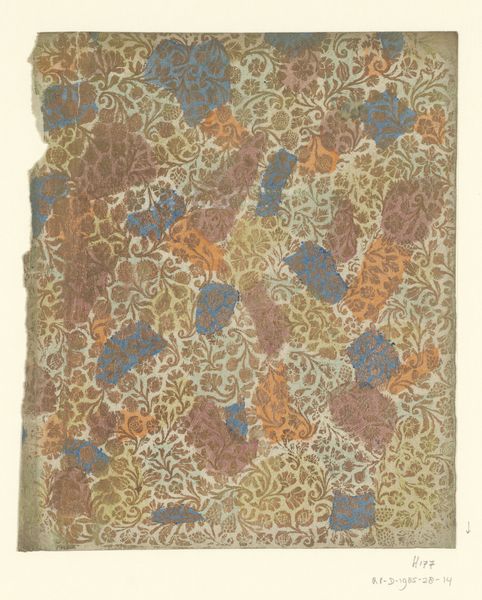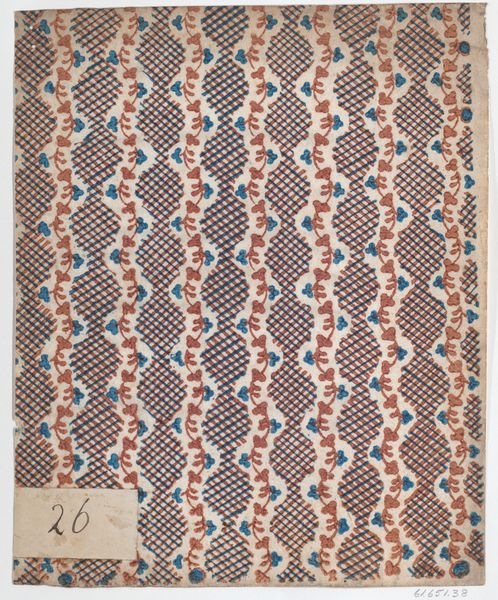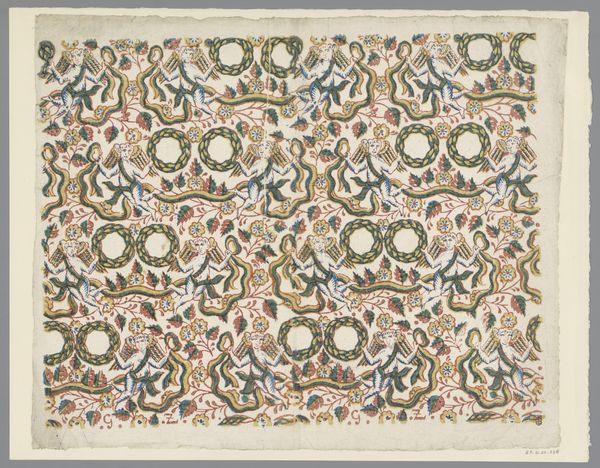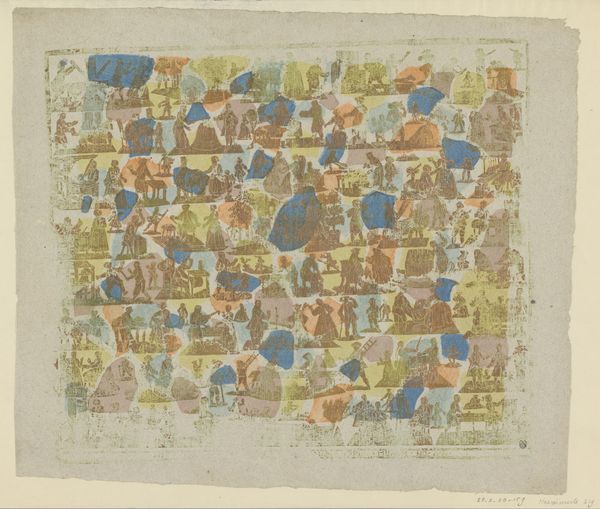
print, paper, engraving
#
pattern heavy
#
natural stone pattern
#
naturalistic pattern
#
baroque
# print
#
paper
#
pattern background
#
repetition of pattern
#
vertical pattern
#
pattern repetition
#
textile design
#
layered pattern
#
engraving
#
combined pattern
Dimensions: height 320 mm, width 387 mm
Copyright: Rijks Museum: Open Domain
Curator: This is "Blad met kleine ranken met kleine bloemen," or "Sheet with small tendrils with small flowers," created by Joseph Friedrich Leopold sometime between 1695 and 1727. It's currently held at the Rijksmuseum. What's your initial take on it? Editor: My immediate impression is that it’s visually overwhelming, almost claustrophobic, but also surprisingly calming. The repetition of patterns in soft hues creates a strange kind of meditative effect. Curator: That's interesting. Considering its historical context, prints like these weren't just decorative. They served as crucial models for artisans, especially in textile design. Think about the politics inherent in these patterns. Who was afforded access to such luxury goods? Who was producing them? These images played a key role in defining status. Editor: So, we're not just looking at a pretty pattern but a visual representation of the Baroque era's social hierarchies and economic dependencies. The intricate floral patterns, while beautiful, also speak to a society deeply invested in displays of wealth and control over the natural world. Did Leopold have a particular audience in mind? Curator: Absolutely. Likely the nobility or wealthy merchant class. And this highlights a critical point— the consumption of these designs reinforces existing power structures, reflecting an era of colonial expansion and resource extraction. The global trade of dyes, for example, had profound implications for colonized communities. Editor: The scale and meticulous details of this printed sheet is fascinating too. Its intricate details likely served to reflect power through its dissemination and subsequent use, yet who truly had access? Where were women in that dialogue, what class dynamics shaped its artistic trends, or labor conditions shaped them? It also looks quite delicate. Is that my imagination? Curator: Not at all. Remember it's printed on paper, giving the design itself an interesting tension: delicate aesthetics reflecting sometimes brutal economic realities. Editor: This image makes me consider how patterns, even seemingly innocuous ones, carry embedded social and historical information. It's a reminder that even beauty is rarely apolitical. Curator: Precisely. Seeing it within that framework lets us uncover deeper narratives about power, gender, and class in the Baroque period. Thank you for joining me.
Comments
No comments
Be the first to comment and join the conversation on the ultimate creative platform.
